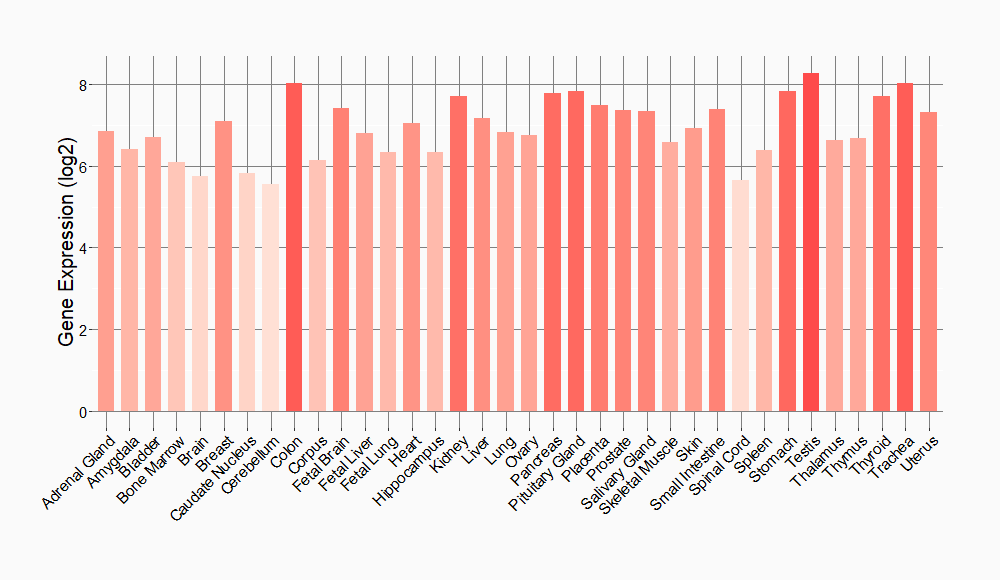Molecule Information
General Information of the Molecule (ID: Mol01875)
| Name |
Glutamine--fructose-6-phosphate aminotransferase 1 (GFPT1)
,Homo sapiens
|
||||
|---|---|---|---|---|---|
| Synonyms |
GFPT1; GFAT; GFPT
Click to Show/Hide
|
||||
| Molecule Type |
Protein
|
||||
| Gene Name |
GFPT1
|
||||
| Gene ID | |||||
| Location |
chr2:69,319,780-69,387,250[-]
|
||||
| Sequence |
MCGIFAYLNYHVPRTRREILETLIKGLQRLEYRGYDSAGVGFDGGNDKDWEANACKIQLI
KKKGKVKALDEEVHKQQDMDLDIEFDVHLGIAHTRWATHGEPSPVNSHPQRSDKNNEFIV IHNGIITNYKDLKKFLESKGYDFESETDTETIAKLVKYMYDNRESQDTSFTTLVERVIQQ LEGAFALVFKSVHFPGQAVGTRRGSPLLIGVRSEHKLSTDHIPILYRTARTQIGSKFTRW GSQGERGKDKKGSCNLSRVDSTTCLFPVEEKAVEYYFASDASAVIEHTNRVIFLEDDDVA AVVDGRLSIHRIKRTAGDHPGRAVQTLQMELQQIMKGNFSSFMQKEIFEQPESVVNTMRG RVNFDDYTVNLGGLKDHIKEIQRCRRLILIACGTSYHAGVATRQVLEELTELPVMVELAS DFLDRNTPVFRDDVCFFLSQSGETADTLMGLRYCKERGALTVGITNTVGSSISRETDCGV HINAGPEIGVASTKAYTSQFVSLVMFALMMCDDRISMQERRKEIMLGLKRLPDLIKEVLS MDDEIQKLATELYHQKSVLIMGRGYHYATCLEGALKIKEITYMHSEGILAGELKHGPLAL VDKLMPVIMIIMRDHTYAKCQNALQQVVARQGRPVVICDKEDTETIKNTKRTIKVPHSVD CLQGILSVIPLQLLAFHLAVLRGYDVDFPRNLAKSVTVE Click to Show/Hide
|
||||
| Function |
Controls the flux of glucose into the hexosamine pathway. Most likely involved in regulating the availability of precursors for N- and O-linked glycosylation of proteins. Regulates the circadian expression of clock genes ARNTL/BMAL1 and CRY1. Has a role in fine tuning the metabolic fluctuations of cytosolic UDP-GlcNAc and its effects on hyaluronan synthesis that occur during tissue remodeling.
Click to Show/Hide
|
||||
| Uniprot ID | |||||
| Ensembl ID | |||||
| Click to Show/Hide the Complete Species Lineage | |||||
Type(s) of Resistant Mechanism of This Molecule
Drug Resistance Data Categorized by Drug
Approved Drug(s)
1 drug(s) in total
| Drug Resistance Data Categorized by Their Corresponding Mechanisms | ||||
|
|
||||
| Disease Class: Type 2 diabetes mellitus | [1] | |||
| Resistant Disease | Type 2 diabetes mellitus [ICD-11: 5A11.0] | |||
| Resistant Drug | Insulin | |||
| Molecule Alteration | Expression | Up-regulation |
||
| Experimental Note | Identified from the Human Clinical Data | |||
| Mechanism Description | Marshall et al. first suggested O-GlcNAcylation modulated insulin sensitivity and showed that the effects of glucose-induced insulin resistance could be blocked by inhibiting GFAT using amidotransferase inhibitors such as O-diazoacetyl-L-serine (azaserine) or 6-diazo-5-oxonorleucine (DON). Subsequently, it was established that glucosamine induces insulin resistance. | |||
| Drug Sensitivity Data Categorized by Their Corresponding Mechanisms | ||||
|
|
||||
| Disease Class: Type 2 diabetes mellitus | [1] | |||
| Sensitive Disease | Type 2 diabetes mellitus [ICD-11: 5A11.0] | |||
| Sensitive Drug | Insulin | |||
| Molecule Alteration | Expression | Down-regulation |
||
| Experimental Note | Identified from the Human Clinical Data | |||
| Mechanism Description | Marshall et al. first suggested O-GlcNAcylation modulated insulin sensitivity and showed that the effects of glucose-induced insulin resistance could be blocked by inhibiting GFAT using amidotransferase inhibitors such as O-diazoacetyl-L-serine (azaserine) or 6-diazo-5-oxonorleucine (DON). Subsequently, it was established that glucosamine induces insulin resistance. | |||
| Disease Class: Type 2 diabetes mellitus | [1] | |||
| Sensitive Disease | Type 2 diabetes mellitus [ICD-11: 5A11.0] | |||
| Sensitive Drug | Insulin | |||
| Molecule Alteration | Expression | Down-regulation |
||
| Experimental Note | Identified from the Human Clinical Data | |||
| Mechanism Description | Marshall et al. first suggested O-GlcNAcylation modulated insulin sensitivity and showed that the effects of glucose-induced insulin resistance could be blocked by inhibiting GFAT using amidotransferase inhibitors such as O-diazoacetyl-L-serine (azaserine) or 6-diazo-5-oxonorleucine (DON). Subsequently, it was established that glucosamine induces insulin resistance. | |||
Disease- and Tissue-specific Abundances of This Molecule
ICD Disease Classification 05

| Differential expression of molecule in resistant diseases | ||
| The Studied Tissue | Omental adipose tissue | |
| The Specified Disease | Obesity related type 2 diabetes | |
| The Expression Level of Disease Section Compare with the Healthy Individual Tissue | p-value: 6.64E-02; Fold-change: 2.04E-01; Z-score: 9.89E-01 | |
|
Molecule expression in the diseased tissue of patients
Molecule expression in the normal tissue of healthy individuals
|
||
| Disease-specific Molecule Abundances |

|
Click to View the Clearer Original Diagram |
| The Studied Tissue | Liver | |
| The Specified Disease | Type 2 diabetes mellitus | |
| The Expression Level of Disease Section Compare with the Healthy Individual Tissue | p-value: 4.65E-02; Fold-change: 3.37E-01; Z-score: 1.65E+00 | |
|
Molecule expression in the diseased tissue of patients
Molecule expression in the normal tissue of healthy individuals
|
||
| Disease-specific Molecule Abundances |

|
Click to View the Clearer Original Diagram |
Tissue-specific Molecule Abundances in Healthy Individuals


|
||
References
If you find any error in data or bug in web service, please kindly report it to Dr. Sun and Dr. Zhang.
